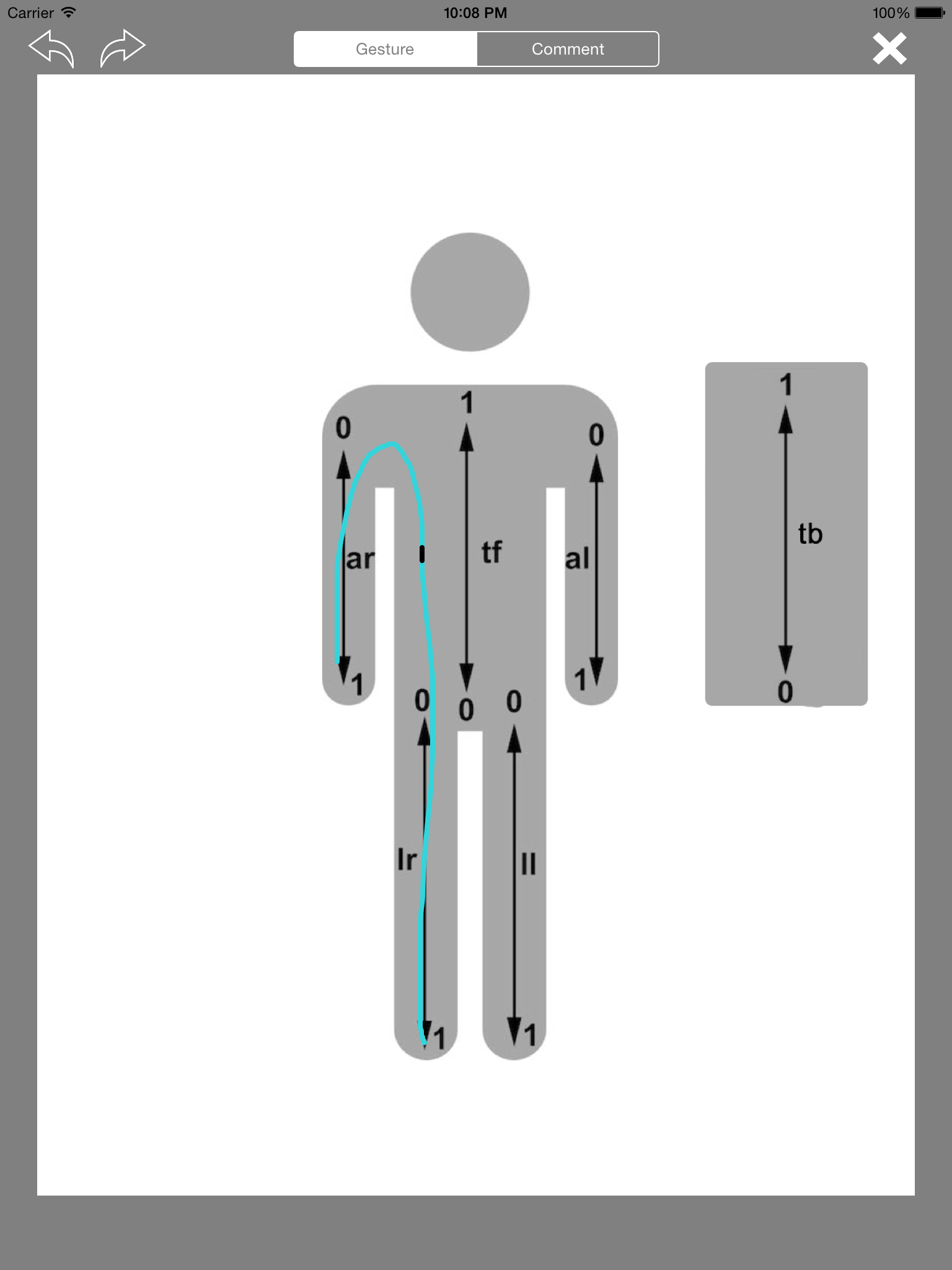DrawOSC and Pattern Player

Tool Summary
| Metadata | |
|---|---|
| Release Yearⓘ The year a tool was first publicly released or discussed in an academic paper. | 2015 |
| Platformⓘ The OS or software framework needed to run the tool. | iPad |
| Availabilityⓘ If the tool can be obtained by the public. | Unavailable |
| Licenseⓘ Tye type of license applied to the tool. | Unknown |
| Venueⓘ The venue(s) for publications. | ICMC |
| Intended Use Caseⓘ The primary purposes for which the tool was developed. | Music |
| Hardware Information | |
|---|---|
| Categoryⓘ The general types of haptic output devices controlled by the tool. | Vibrotactile |
| Abstractionⓘ How broad the type of hardware support is for a tool.
| Bespoke |
| Device Namesⓘ The hardware supported by the tool. This may be incomplete. | Ilinx Garment |
| Device Templateⓘ Whether support can be easily extended to new types of devices. | No |
| Body Positionⓘ Parts of the body where stimuli are felt, if the tool explicitly shows this. | Arm, Leg, Torso |
| Interaction Information | |
|---|---|
| Driving Featureⓘ If haptic content is controlled over time, by other actions, or both. | Time |
| Effect Localizationⓘ How the desired location of stimuli is mapped to the device.
| Target-centric |
| Non-Haptic Mediaⓘ Support for non-haptic media in the workspace, even if just to aid in manual synchronization. | None |
| Iterative Playbackⓘ If haptic effects can be played back from the tool to aid in the design process. | Yes |
| Design Approachesⓘ Broadly, the methods available to create a desired effect.
| Direct, Procedural |
| UI Metaphorsⓘ Common UI metaphors that define how a user interacts with a tool.
| Demonstration |
| Storageⓘ How data is stored for import/export or internally to the software. | Unknown |
| Connectivityⓘ How the tool can be extended to support new data, devices, and software. | Open Sound Control |
Additional Information
The DrawOSC and Pattern Player tools were used to compose tactile effects with the eccentric rotating mass (ERM) motors present on the arms, legs, and torso of the Ilinx garment. DrawOSC provides a visual representation of the body and allows the user to draw vibration trajectories that are played on the garment and to adjust a global vibration intensity parameter. The Pattern Player tool additionally allows for intensity to be controlled independently over these trajectories.
For more information about DrawOSC and the Pattern Player, consult the ICMC 2015 paper titled “Composition Techniques for the Ilinx Vibrotactile Garment”.